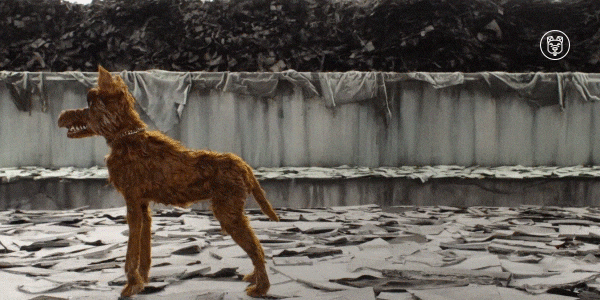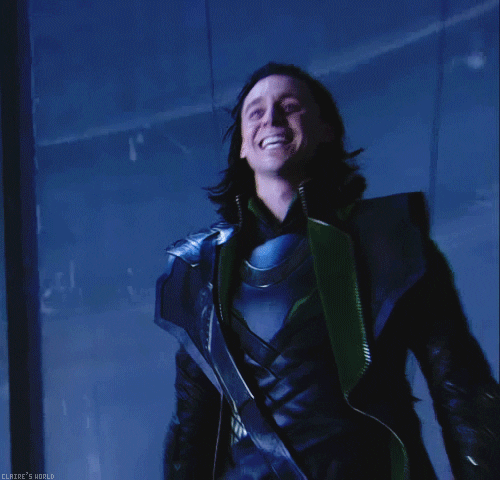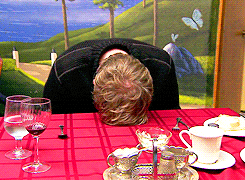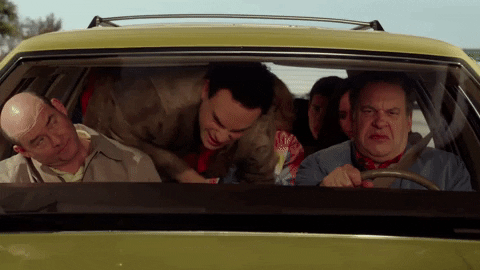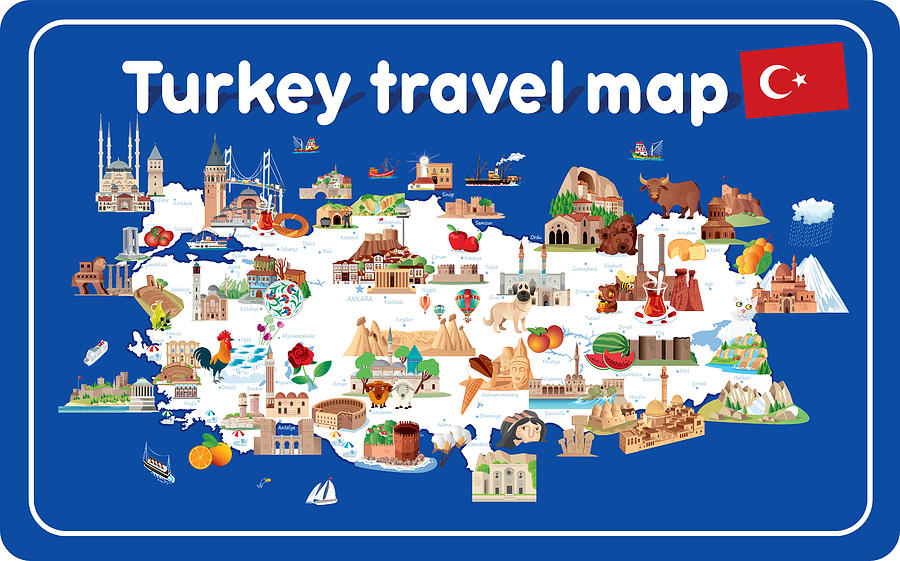
The City Of Troy
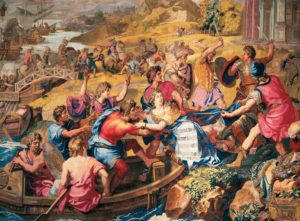 I began my second day on the road with a visit to the ruins and excavation of Homer’s fabled city of Troy. You will recall the Greek historian and poet wrote that Troy was destroyed because of the lust for the beauty of a single woman – Helen of Troy. The legend as told by Homer and retold by Hollywood is the story of a beautiful married Greek woman (Helen) seduced and abducted by Paris the Prince of Troy. This act ignites a war in which one of ancient Greece’s fiercest warriors Achilles leads an army to retrieve the beauty and punish the city of Troy.
I began my second day on the road with a visit to the ruins and excavation of Homer’s fabled city of Troy. You will recall the Greek historian and poet wrote that Troy was destroyed because of the lust for the beauty of a single woman – Helen of Troy. The legend as told by Homer and retold by Hollywood is the story of a beautiful married Greek woman (Helen) seduced and abducted by Paris the Prince of Troy. This act ignites a war in which one of ancient Greece’s fiercest warriors Achilles leads an army to retrieve the beauty and punish the city of Troy.
The Greeks and the Trojans fight to a stalemate and the siege lasts for nine years until Achilles is killed by an arrow to his heel (the only vulnerable part of his body (he was the son of a goddess) and is replaced as commander by Odysseus who changes the battle plan from one of sheer force to trickery.
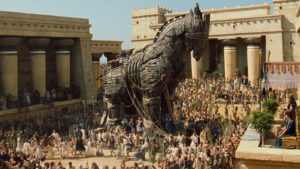 He orders the building of a huge wooden horse which he fills with his best and most fierce warriors. He then pretends to withdraw his troops and sail back to Greece but not before pushing the huge wooden horse to the gates of Troy.
He orders the building of a huge wooden horse which he fills with his best and most fierce warriors. He then pretends to withdraw his troops and sail back to Greece but not before pushing the huge wooden horse to the gates of Troy.
The Trojans, believing, they have defeated the Greeks wheel the parting gift inside city walls and begin a massive victory party with too much wine and feasting. Once everyone has passed out and in a deep slumber, the Greek warriors slip out of the wooden horse and open the city gates. And with little resistance slaughter the Trojans, sack then burn the city.
How much if any of the legends are true is a mystery but the lost city of Troy was definitely found in 1871 by a German businessman and opportunist who once again looted the city under the noses of the Ottoman Sultan.
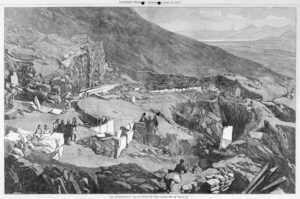 The city of Troy existed in various forms from 3000 BC until 500 AD when it was finally abandoned because of malaria, epidemics, and wars. Once abandoned the fabled city was gradually and literally covered by the sands of time to the point that no one could remember exactly where the city stood and the sand and nature covered all signs of the great metropolis. Many believed the city never existed at all and was simply a city from Homer’s fertile imagination.
The city of Troy existed in various forms from 3000 BC until 500 AD when it was finally abandoned because of malaria, epidemics, and wars. Once abandoned the fabled city was gradually and literally covered by the sands of time to the point that no one could remember exactly where the city stood and the sand and nature covered all signs of the great metropolis. Many believed the city never existed at all and was simply a city from Homer’s fertile imagination.
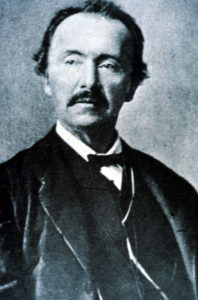 But Schliemann believed Troy existed and swore from childhood he would find it. In 1871 Schliemann received permission from the Ottoman Sultan to search for and excavate the lost city. Basing his search on a hunch by the English Consul Frank Calvert that the city was probably built on Hisarlik Hill he began his excavations there.
But Schliemann believed Troy existed and swore from childhood he would find it. In 1871 Schliemann received permission from the Ottoman Sultan to search for and excavate the lost city. Basing his search on a hunch by the English Consul Frank Calvert that the city was probably built on Hisarlik Hill he began his excavations there.
Unfortunately, Schliemann was not an archeologist but a fortune hunter and thief. Instead of a careful excavation designed to protect the integrity of the site, using hundreds of low paid diggers and excavation equipment dug a huge trench thru the city ruins destroying many artifacts that held no monetary value. Eventually he found Troy’s treasure in the old city wall and smuggled it out of the country to Greece.
 But regardless of Schliemann’s motives, lack of archeological expertise and morals he had found the city and real archeologists have spent the last 150 years digging and sifting thru the sands and uncovering the real story of Troy. I will not try to describe all that I saw but have included the photos I took and mention the highlights of what has been uncovered to date. You will notice that there are still archeologists hard had work – they are far from finished uncovering all that time has hidden in Troy under the sand.
But regardless of Schliemann’s motives, lack of archeological expertise and morals he had found the city and real archeologists have spent the last 150 years digging and sifting thru the sands and uncovering the real story of Troy. I will not try to describe all that I saw but have included the photos I took and mention the highlights of what has been uncovered to date. You will notice that there are still archeologists hard had work – they are far from finished uncovering all that time has hidden in Troy under the sand.
- The city walls and gate that protected the Trojans from the angry Greeks
- The terrace of the Athena Temple but all that remains are smooth cut stones and a few ceiling plates (the rest have been looted and are in museums across the world)
- The Athena Temple wells
- The foundations of the oldest buildings in Troy (3000bc) the buildings had stone foundations a flat roof and fireplaces
 The large stone ramp that victorious Trojan Kings used upon their return from wars
The large stone ramp that victorious Trojan Kings used upon their return from wars- The empty hole in the city wall that once housed the treasure stolen by Schliemann
- A sacred site used for the sacrifice of cattle and sheep including the alter and wells for collecting the blood
- Odeon, a small theater constructed during the Roman period 2nd century ad
- Roman Bath
- Apollo Temple (believed to be where Anthony met Cleopatra)
- Greco-Roman Senate building
It will be interesting to see what treasures and secrets future digs will uncover in the decades to come. If I live another 10 years I might like to revisit this site just to see what new has been found.


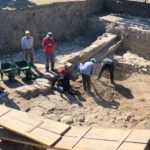
























Lunch and Carpet-Making Demonstration
From Troy, we drove on toward the ancient hilltop city of Pergamum. But first we stopped for lunch and another carpet making demonstration. I made it clear to the guide I had already bought my carpets in Bukhara and had no interest in seeing or buying anymore. He pleaded with me to visit the co-op and see the demonstration and enjoy the lunch that they had already prepared for me. I grudgingly agreed since they went to the trouble to prepare a lunch for me.
And I am so glad I did! The demonstration was the most complete explanation and demonstration of carpet making I have witnessed.
Previous visits to carpet facilities have focused on the weaving process and the final product. But this demonstration covered everything. Beginning with what minerals and plants are used to color the silk treads – no chemicals are used in the coloring process.
Next, they showed me how the silkworm cocoons are soaked to loosen the silk threads and then how the fibers are then spun five or six threads at a time from the cocoons onto a spinning apparatus to create spools of silk thread. And, finally they sat me down with Fatama, one of the ladies tying the knots and creating the carpet. I even tried my hand at knot tying but sucked at it which she thought was pretty funny.
She could tie knots at the speed of light. Her fingers were just a blur as she tied knot after knot following a pattern of shifting shapes and colors as she sped along. Me, I was slow, awkward and clumsy – kind of felt like the first time I tried to unfasten a girl’s bra in the back seat of a car in the dark as a teenager. In theory, I knew how it was supposed to be done but in practice I was all thumbs and hopeless.
After my misadventure at the carpet frame it was on to lunch as the manager of the facility showed me carpet after carpet and explained the differences in material, knot density, and the individual patterns specific to each of the 118 villages in the Bergama handwoven carpet producing district of Turkey.
 I’ve been a proud carnivore and for 67 years and have strongly believed a meal isn’t complete without meat. However, the lunch served me at the carpet co-op was meatless and delicious! They prepared a salad of diced tomatoes, cucumbers, onions and lemon juice, bulgur wheat, an eggplant and tomato concoction that was out of this world, and freshly baked home-made bread all finished off with fresh from the field watermelon. I felt bad for not buying anything but I warned them ahead of time that vodka (see the Kiva blog) was the secret to opening my wallet.
I’ve been a proud carnivore and for 67 years and have strongly believed a meal isn’t complete without meat. However, the lunch served me at the carpet co-op was meatless and delicious! They prepared a salad of diced tomatoes, cucumbers, onions and lemon juice, bulgur wheat, an eggplant and tomato concoction that was out of this world, and freshly baked home-made bread all finished off with fresh from the field watermelon. I felt bad for not buying anything but I warned them ahead of time that vodka (see the Kiva blog) was the secret to opening my wallet.
The City of Pergamum
 After my great meal, a full belly, and enough knowledge about carpet to become and instant expert it was on to the ancient hilltop city of Pergamum. The city came to prominence during the Hellenistic Period and remained a rich and powerful city thru the Greek period as well as later thru the Roman era and its decline did not begin until 300 AD.
After my great meal, a full belly, and enough knowledge about carpet to become and instant expert it was on to the ancient hilltop city of Pergamum. The city came to prominence during the Hellenistic Period and remained a rich and powerful city thru the Greek period as well as later thru the Roman era and its decline did not begin until 300 AD.
Between 281 and 133bc the city was a major cultural center of the Greek world. The city was reputed to have the second largest library in the ancient world behind only Alexandria. The city is sited in the New Testament Book of Revelation as one of the seven churches of Asia.
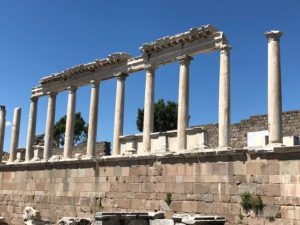
Interesting ruins include: the Pergamon Alter (what wasn’t removed and is now in the Berlin Museum), theater, Temple of Dionysus, Temple of Athena, Upper Citadel, Temple for Trajan and Zeus, Royal Palaces, Upper Agora, Roman baths complex, Gymnasium, Temple of Hera, Sanctuary of Demeter, Lower Agora, City Walls, City Gates and the Red Basilica.






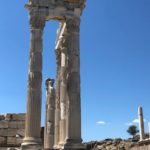









Aegean Sunsets
From the Pergamum ruins, we then drove on to the coastal city of Kusadasi where I spent the next two nights watching the sunset over the Aegean while enjoying dinner and beers from a second-story outdoor terrace – photos attached.



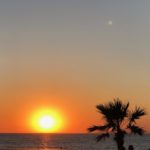











House of Virgin Mary
The next morning, we drove first to the House of Virgin Mary – at least the last house where it is believed she lived and died. And then on to Ephesus. Founded in the 10th century BC by the Greeks, the city thrived and became one of the richest and most beautiful cites of the ancient world. By 129 BC the city of 50,000 was under the control of the Romans.
The final home of the Virgin Mary sits on a wooded hilltop high above Ephesus. The small stone cottage has been commercialized and now is tastefully surrounded by religious souvenir stalls and stores. Visitors may walk thru the simple two room cottage but no photos are allowed. Visitors and pilgrims can drink and fill their water bottles from the nearby spring (purported to have healing powers), leave written prayers and requests of the Virgin on the stonewall surrounding the spring or shop for a wide assortment of rosaries, crosses, bibles and other assorted Christian souvenirs and keep sakes.
The Case made for this site being the final home of the Virgin Mary by the patrons of the shrine in their own words…
Facts found in the Scriptures:
St. John in his Gospel tells us that Jesus before dying on the Cross
Entrusted to him the care of His Mother when he said, “here is your mother” and from that hour St. John took her to his own.
The “Acts of the Apostles” relates how, after the death of Christ, his followers were persecuted in Jerusalem. St. Stephen was stoned in 37 ad and St. James was beheaded in 42ad. And they further relate how they divided the world between them for the preaching of the gospel. St. John was given Asia Minor. Mary had been given to his care and with the persecutions he probably brought her with him.
The Facts Confirmed Historically:
- The presence of the tomb of St. John in Ephesus
- The presence of the first Basilica of the world dedicated to the Blessed Virgin. Also, the Ecumenical Council of 431ad was held in Ephesus in this Basilica for the definition of the dogma of the Divine Motherhood of Mary. The Council Fathers write about Nestorius: “…after his arrival to Ephesus, where John the Theologian and the Holy Virgin Mary, Mother of God…”
- Finally, we find another oral conformation preserved faithfully by the Orthodox villagers of Kirkince. These people were the descendants of the Christians of Ephesus. They had passed from generation to generation the belief of the Dormition of Mary in this place so they call PANAGHJA KAPULU. They have kept this tradition alive through the annual pilgrimage of 15th of August.
Discovery of this Place:
- In the last century, there appeared a book: “The Life of the Blessed Virgin” published in Germany. The material in this book comes from the revelations of a German stigmatized nun, Catherina Emmerich. She was an invalid and had never left Germany. In her visions, she described with amazing accuracy the hills of Ephesus and the House where she saw the Blessed Virgin spending her last years. Accordingly, two scientific expeditions were organized in 1891 and they found the place in perfect and identical correspondent with the indications of Catherina Emmerich.
The City of Ephesus
After our own little pilgrimage to the Virgin Mary’s cottage, we drove on to Ephesus. The city flourished from 300 BC until 700 AD when it was abandoned after an earthquake rerouted the river drying up the port and creating a marsh in its place breeding mosquitoes and a malaria outbreak. Depending on your orientation Ephesus was either the beginning or ending of the famed Silk Road to China.
Highlights of the city ruins include the Temple of Artemis (considered one of the Seven Wonders of the Ancient World) Celsus Library, the outdoor theater, hammams, public toilets, Agora, The Basicica Stoa (Royal Colonade), Temple of Domitian, Temple of Hadrian, The House of Pleasure (Whore House), Theater Gymasium, and the marbled main street. Photos of the city ruins attached.


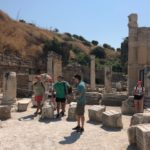



















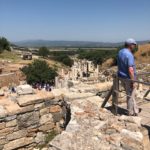
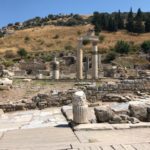






















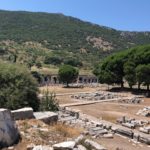



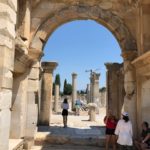


















A couple of items worth mentioning before I close this blog concern the public toilets, the strategic location of the library across from the House of Pleasure, and the Temple of Artemis.
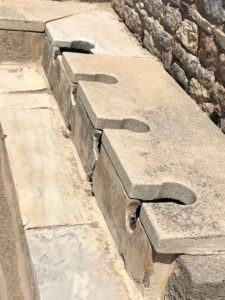 First the toilets – you will note in one photo there is what appears to be a flat stone bench with evenly spaced holes. This photo is of one third of the public toilet. The room was lined on three sides with seating for 15 people. Several meters beneath the bench of toilets flowed a channel of fast-moving water to carry the waste and odor away quickly. A second small channel can be seen just below the marble footrest. This channel was also filled with fast-flowing water and a cleaning cloth was located at the base of each hole which was used and rinsed clean in the channel after each use. The smart Ephesian would time his call of nature to get the first spot for the cleanest water. The last man in had to rinse his cleaning cloth in the water downstream from 14 other rinsing cloths.
First the toilets – you will note in one photo there is what appears to be a flat stone bench with evenly spaced holes. This photo is of one third of the public toilet. The room was lined on three sides with seating for 15 people. Several meters beneath the bench of toilets flowed a channel of fast-moving water to carry the waste and odor away quickly. A second small channel can be seen just below the marble footrest. This channel was also filled with fast-flowing water and a cleaning cloth was located at the base of each hole which was used and rinsed clean in the channel after each use. The smart Ephesian would time his call of nature to get the first spot for the cleanest water. The last man in had to rinse his cleaning cloth in the water downstream from 14 other rinsing cloths.
 Second the positioning of the library and House of Pleasure. According to our guide, there was an underground passage from the library to the House of Pleasure. This would allow the city’s finest to tell their wives they were going to the library to study astronomy or history then slip over the House of Pleasure to study female anatomy with the wives being none the wiser. Just goes to show how little has changed of human nature since the ancient times. Bill Clinton would have loved Ephesus!
Second the positioning of the library and House of Pleasure. According to our guide, there was an underground passage from the library to the House of Pleasure. This would allow the city’s finest to tell their wives they were going to the library to study astronomy or history then slip over the House of Pleasure to study female anatomy with the wives being none the wiser. Just goes to show how little has changed of human nature since the ancient times. Bill Clinton would have loved Ephesus!
And finally, the Temple of Artemis – The temple is actually set apart from the rest of the city and was built on a marsh by a small lake. The temple was built on the marsh to provide flexibility during earthquakes. The temple foundation was dug deep into the bog and then seven layers of charcoal were used for the foundation. Upon the charcoal foundation rested 28 huge marble columns holding up a wooden roof.
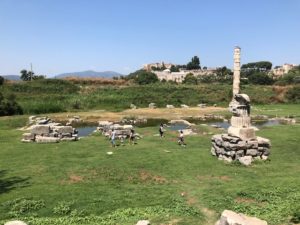 In addition to the temple’s use as a holy place, its cellar was used for storing enormous amounts of olive oil. The temple fell victim to an arson and between the charcoal foundation, tons and tons of olive oil and the wooden roof the structure was doomed. Legend has it that the Goddess Diana was away in Macedonia midwifing the birth of Alexander the Great and not present to protect her own temple.
In addition to the temple’s use as a holy place, its cellar was used for storing enormous amounts of olive oil. The temple fell victim to an arson and between the charcoal foundation, tons and tons of olive oil and the wooden roof the structure was doomed. Legend has it that the Goddess Diana was away in Macedonia midwifing the birth of Alexander the Great and not present to protect her own temple.
Again, I finished my day watching the sunset with a nice cold beer and a heaping plate of Aegean Seafood. Next is my final blog from Turkey which will cover my visits to Pamukkale, Hierapolis, Konya, and Cappadocia.


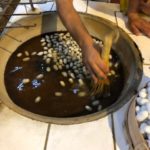
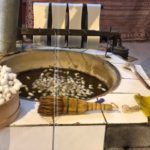


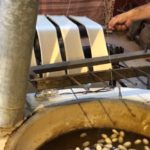

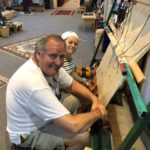
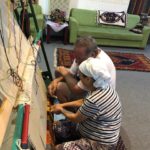

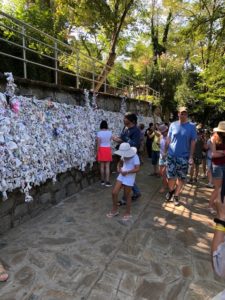
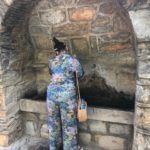
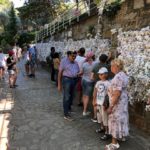
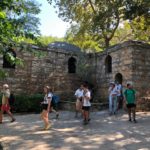
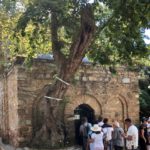

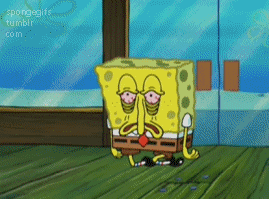 I arrived in Istanbul at 6 am bleary-eyed, cranky and ready for a nap. I made it thru passport control, baggage claim and customs quickly and without a hitch. My first setback came when I exited the secure area and the person assigned to meet me at the airport was nowhere to be seen. I spent the next 15 minutes wandering around looking for some idiot holding a sign with my name on it. I found him sitting in a coffee shop enjoying a cup of Turkish coffee on my time! I would have left him and just grabbed a taxi but I had no idea what hotel the tour agency had booked for me.
I arrived in Istanbul at 6 am bleary-eyed, cranky and ready for a nap. I made it thru passport control, baggage claim and customs quickly and without a hitch. My first setback came when I exited the secure area and the person assigned to meet me at the airport was nowhere to be seen. I spent the next 15 minutes wandering around looking for some idiot holding a sign with my name on it. I found him sitting in a coffee shop enjoying a cup of Turkish coffee on my time! I would have left him and just grabbed a taxi but I had no idea what hotel the tour agency had booked for me.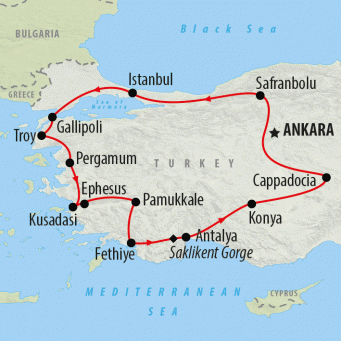




 After breakfast, shower and a short power nap, I walked across the street to the Tour Agency to collect my itinerary, travel vouchers, hotel vouchers, and site tickets. There I was informed the person handling my account had a long night, was still asleep and would not be into the office until around 2 pm. Okay, so I reverted to the old pre-Tibetan Buddhist Rockie and went a little Medieval on the poor office staff – which accomplished absolutely nothing lol. After my very best imitation of an Ugly American, I went to grab some lunch and wander around the neighborhood until sleeping beauty showed up to work.
After breakfast, shower and a short power nap, I walked across the street to the Tour Agency to collect my itinerary, travel vouchers, hotel vouchers, and site tickets. There I was informed the person handling my account had a long night, was still asleep and would not be into the office until around 2 pm. Okay, so I reverted to the old pre-Tibetan Buddhist Rockie and went a little Medieval on the poor office staff – which accomplished absolutely nothing lol. After my very best imitation of an Ugly American, I went to grab some lunch and wander around the neighborhood until sleeping beauty showed up to work.












































































































































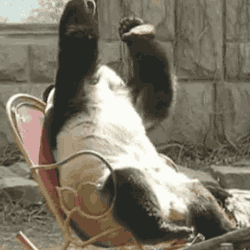 And now I will share my latest Uzbeki-Tajiki border fiasco. When Hussain acquired my Tajiki Visa he was only allowed to get a one entry Visa. The problem was I needed to enter Tajikistan twice –once by air on the 8th then again on the 21st via the Sammerkand-Panjakent Road border crossing. Hussain said not to worry. Once I crossed into Uzbekistan on the 15th I could reapply for a new Visa and no problems getting the E-Visa by the 21st.
And now I will share my latest Uzbeki-Tajiki border fiasco. When Hussain acquired my Tajiki Visa he was only allowed to get a one entry Visa. The problem was I needed to enter Tajikistan twice –once by air on the 8th then again on the 21st via the Sammerkand-Panjakent Road border crossing. Hussain said not to worry. Once I crossed into Uzbekistan on the 15th I could reapply for a new Visa and no problems getting the E-Visa by the 21st.
 I received word of this new complication just as I reached Bukhara and was sitting down to lunch with Carpet man’s family. He had again invited me to dine with him but this time at his hotel and he cooked the lamb himself. Unfortunately, I was the world’s worst guest because I spent the entire lunch booking a Samarkand hotel room, my flight from Tashkent to Istanbul, and yelling at Hussain and the Hotel over the phone about my bag.
I received word of this new complication just as I reached Bukhara and was sitting down to lunch with Carpet man’s family. He had again invited me to dine with him but this time at his hotel and he cooked the lamb himself. Unfortunately, I was the world’s worst guest because I spent the entire lunch booking a Samarkand hotel room, my flight from Tashkent to Istanbul, and yelling at Hussain and the Hotel over the phone about my bag.  Well, it wasn’t that easy. I received a call from Hussain at three in the morning telling me the jack ass owner of the Dior Hotel still wouldn’t release my bag to the driver and to not come to the border because no one would be there. Hussain fought with the hotel owner throughout the morning and day and finally drove to Dushanbe himself and personally went in and retrieved my bag.
Well, it wasn’t that easy. I received a call from Hussain at three in the morning telling me the jack ass owner of the Dior Hotel still wouldn’t release my bag to the driver and to not come to the border because no one would be there. Hussain fought with the hotel owner throughout the morning and day and finally drove to Dushanbe himself and personally went in and retrieved my bag.





























 So, there I stood at the edge of the parking lot from 11 pm until just before 1 is and no sign of Hussain. I was just about to give up and go check-in for my flight when Hussain made his dramatic entrance running across the parking lot dragging my bag and waving his arm frantically. I gave him $200 he gave me my bag and I sprinted to check-in before the flight was closed out. I made it thru check-in, passport control, and security then walked straight on the plane as one of the last to board with only minutes to spare.
So, there I stood at the edge of the parking lot from 11 pm until just before 1 is and no sign of Hussain. I was just about to give up and go check-in for my flight when Hussain made his dramatic entrance running across the parking lot dragging my bag and waving his arm frantically. I gave him $200 he gave me my bag and I sprinted to check-in before the flight was closed out. I made it thru check-in, passport control, and security then walked straight on the plane as one of the last to board with only minutes to spare.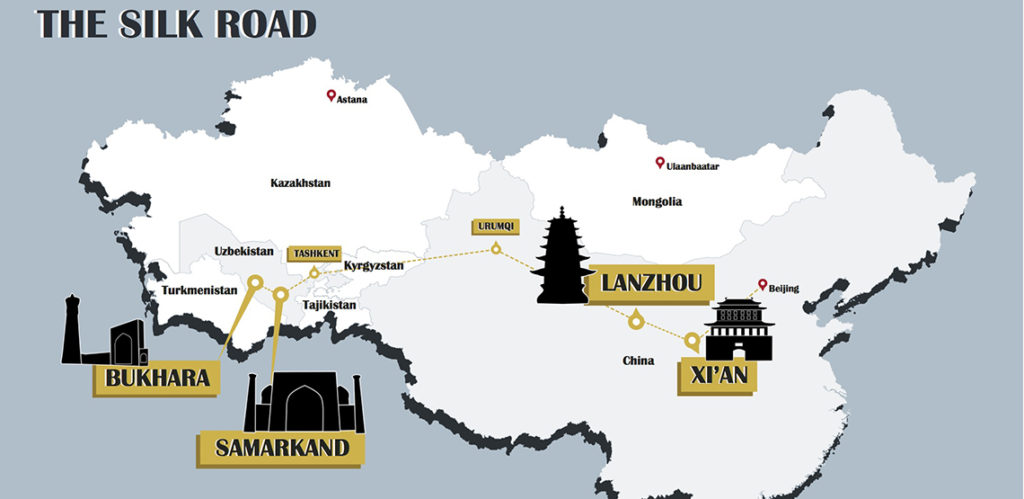
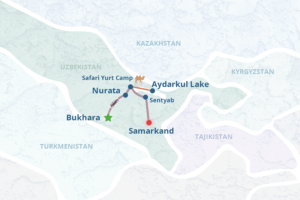
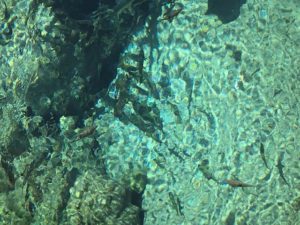
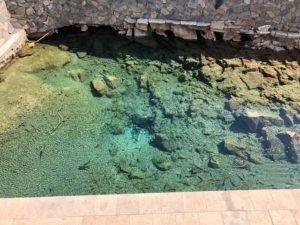
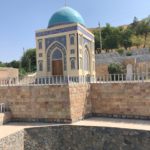
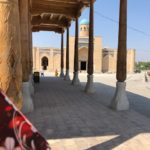

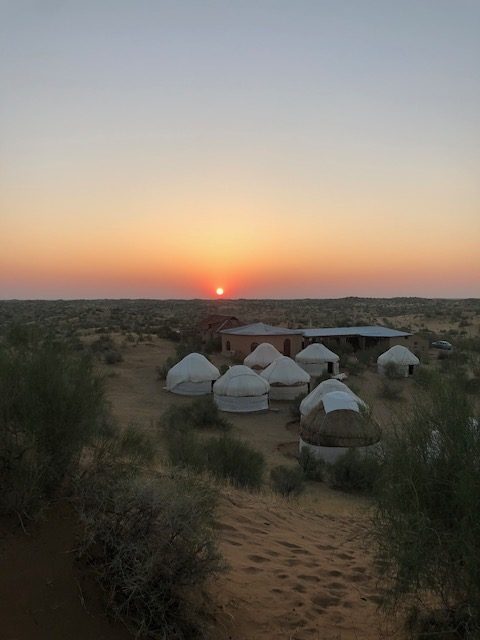
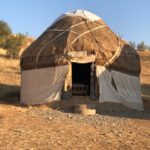

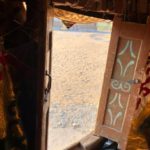
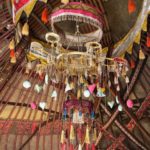
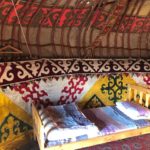
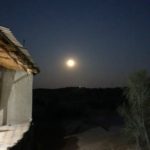
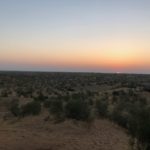
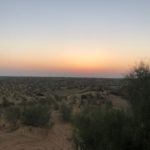
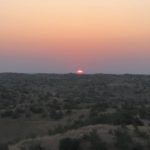
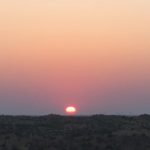
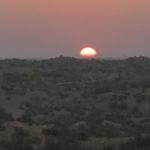
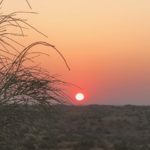
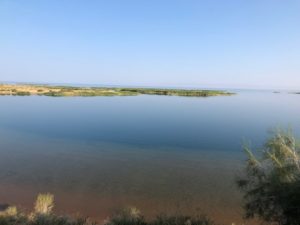

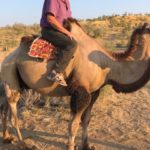
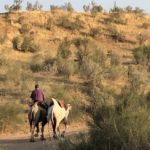

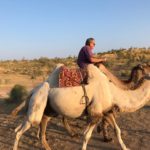
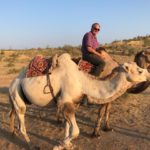
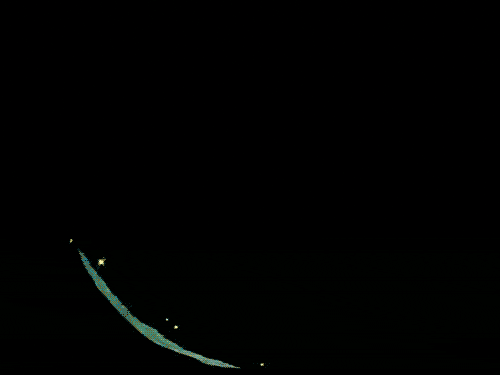 Dinner was grilled lamb, rice, potatoes, a salad of diced tomatoes and cucumbers, and flatbread all washed down with a nice cold beer. Dessert was freshly harvested watermelon and an assortment of nuts. After dinner, we were serenaded under the full moon by a local shepherd singing traditional Tajiki folk songs. Shira informed me that I had a second chance at making a wish.
Dinner was grilled lamb, rice, potatoes, a salad of diced tomatoes and cucumbers, and flatbread all washed down with a nice cold beer. Dessert was freshly harvested watermelon and an assortment of nuts. After dinner, we were serenaded under the full moon by a local shepherd singing traditional Tajiki folk songs. Shira informed me that I had a second chance at making a wish.
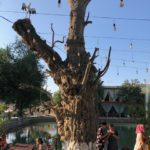
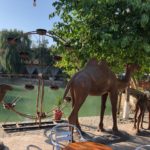
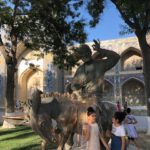
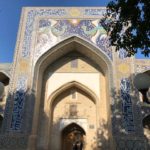

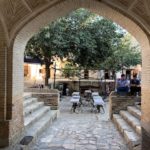

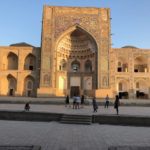


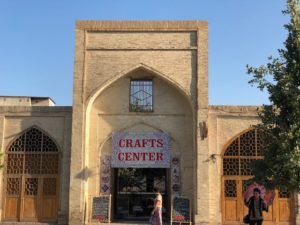

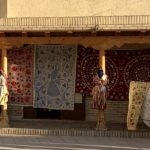
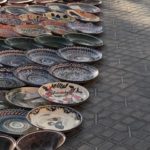

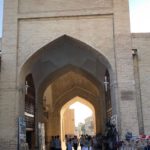
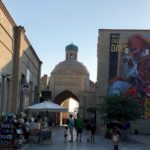


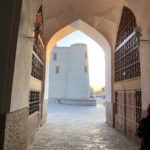
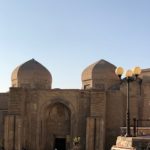
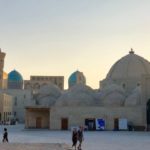
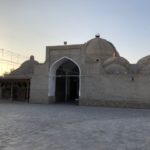
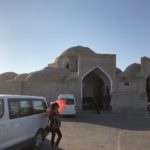
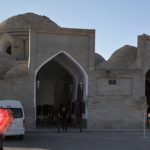
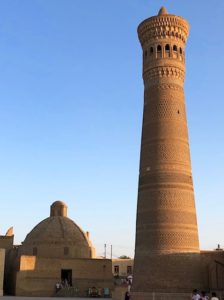
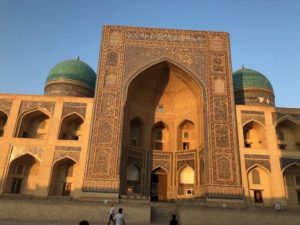

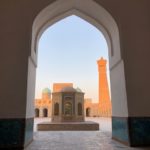
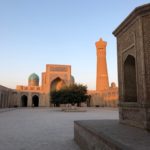
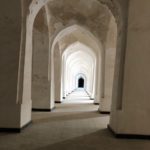
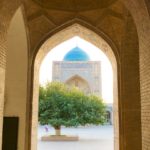
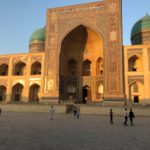
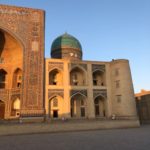
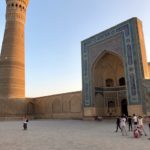

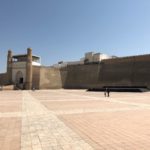
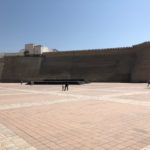
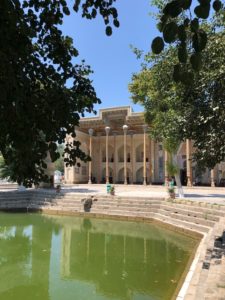

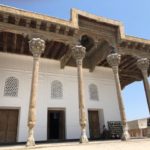
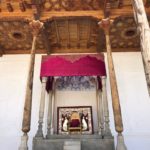

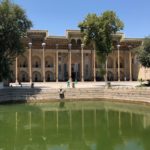

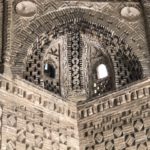
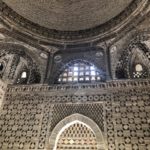
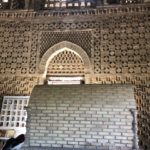
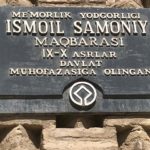


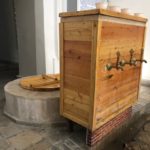
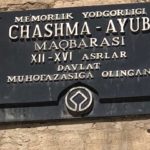






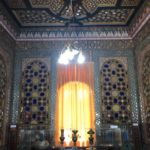








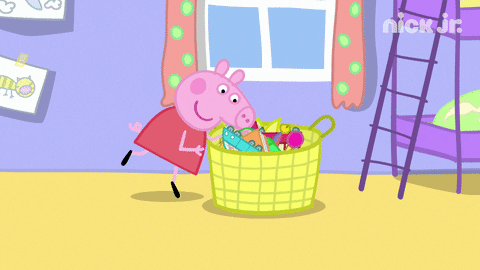 As a result, every automobile, truck or bus entering Uzbekistan is searched by both bomb and drug dogs then completely taken apart and manually searched. They take the seats out of the car, everything including the spare out of the trunk, go through the engine compartment and under the car with mirrors and remove all four tires to check the wheel wells.
As a result, every automobile, truck or bus entering Uzbekistan is searched by both bomb and drug dogs then completely taken apart and manually searched. They take the seats out of the car, everything including the spare out of the trunk, go through the engine compartment and under the car with mirrors and remove all four tires to check the wheel wells. 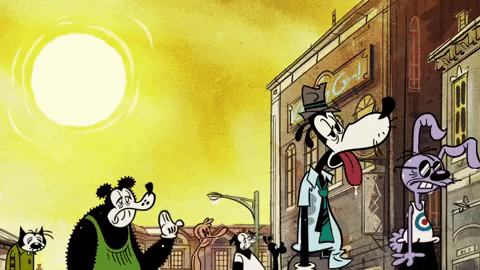 As we sat at the curb watching poor BoBo’s SUV be taken apart she asked me why in the world we tried to bring a car across the border and how exactly was BoBo going to find his way around Southern Uzbekistan. Shira who lives in Bukhara had taken an hour and a half train to get to Samarkand then a 45-minute taxi ride to the border to be on-site at 8:30. She had been standing out in the hot sun for the entire morning since there was not a single structure or tree for shade on the Uzbeki side to seek refuge from the sun.
As we sat at the curb watching poor BoBo’s SUV be taken apart she asked me why in the world we tried to bring a car across the border and how exactly was BoBo going to find his way around Southern Uzbekistan. Shira who lives in Bukhara had taken an hour and a half train to get to Samarkand then a 45-minute taxi ride to the border to be on-site at 8:30. She had been standing out in the hot sun for the entire morning since there was not a single structure or tree for shade on the Uzbeki side to seek refuge from the sun.









































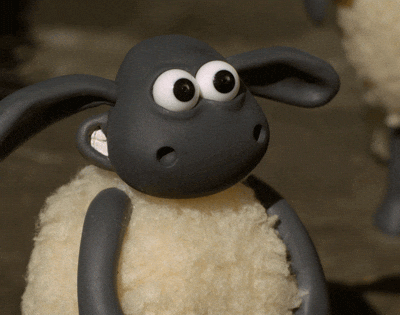 One of the things that made Shira such a fantastic guide is that she is not only an expert on Uzbeki history thru the ages – but she is also a virtual fountain of knowledge about her culture, traditions and legends. And when you combine all of that with her inherited gift for storytelling. (I think oral storytelling is ingrained in all Central Asians) and her incredible gift for languages (she speaks English like a native, Russian, Italian, Uzbeki, and Tajiki)- Shira makes an incredible guide that can make the places and long dead people come alive. It is a truly special gift. And I highly recommend her for anyone headed to Uzbekistan.
One of the things that made Shira such a fantastic guide is that she is not only an expert on Uzbeki history thru the ages – but she is also a virtual fountain of knowledge about her culture, traditions and legends. And when you combine all of that with her inherited gift for storytelling. (I think oral storytelling is ingrained in all Central Asians) and her incredible gift for languages (she speaks English like a native, Russian, Italian, Uzbeki, and Tajiki)- Shira makes an incredible guide that can make the places and long dead people come alive. It is a truly special gift. And I highly recommend her for anyone headed to Uzbekistan.































































































































































































